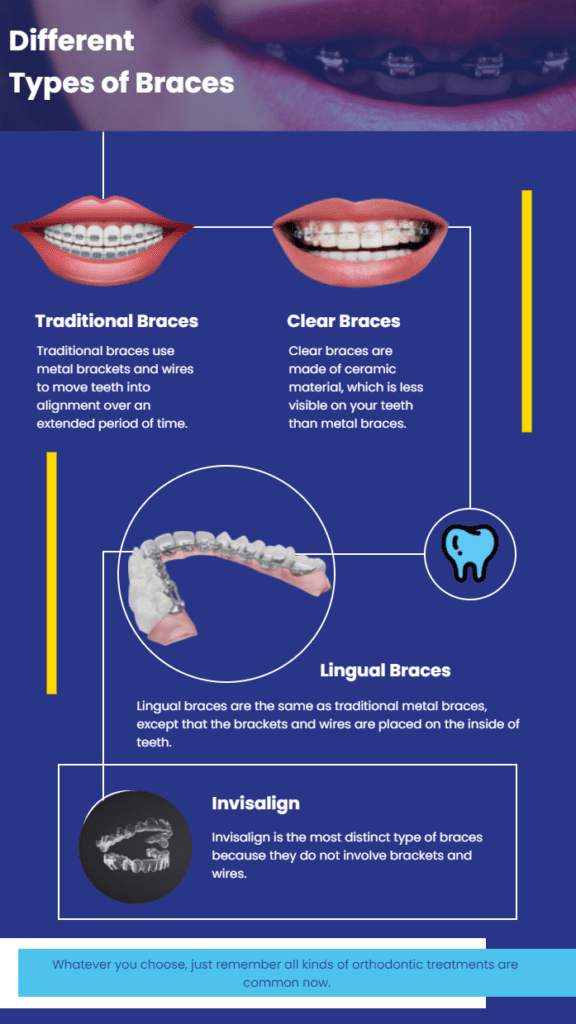Your Guide to Cumming Invisalign: Straightening Teeth with Style and Convenience
Your Guide to Cumming Invisalign: Straightening Teeth with Style and Convenience
Blog Article
Comprehensive Overview to Orthodontics Procedures for Fixing Oral Imbalances
Recognizing the intricacies of each procedure, including their mechanisms, advantages, and possible disadvantages, is important in making notified choices regarding one's orthodontic treatment. As we navigate via the extensive overview to orthodontic procedures for dealing with dental misalignments, the intricate information of each method will certainly unravel, shedding light on the course toward a harmonious and useful oral positioning.
Orthodontic Procedures Overview

Along with clear aligners and conventional braces, orthodontists might additionally suggest various other treatments like headgear, palatal expanders, or retainers to address details positioning problems (cumming invisalign). These procedures are tailored to each individual's one-of-a-kind requirements and may involve a combination of treatments to achieve the desired results. Normal modifications and monitoring are vital parts of orthodontic treatment to ensure progress is on track and to make any type of required adjustments along the means. By going through orthodontic procedures, people can not just achieve a straighter grin yet likewise boost their overall oral health and function.
Traditional Dental Braces: Just How They Work
When thinking about orthodontic treatments for oral imbalances, typical dental braces stand apart as a tried and true method for remedying teeth positioning. Conventional dental braces contain brackets, cords, and bands that work with each other to apply continuous pressure on the teeth, slowly relocating them right into the wanted placement. The brackets are connected to the teeth making use of a special adhesive, and the cables are threaded with the brackets. By adjusting the tension of the cords, orthodontists can control the instructions and pressure related to each tooth, assisting them right into correct placement gradually.
As pressure is used to the teeth with the dental braces, the bone surrounding the teeth is improved to sustain the brand-new tooth positions. Patients will certainly require routine modifications at the orthodontist's office to guarantee the braces proceed to apply the appropriate stress for reliable teeth motion.
Unseen Aligners: Pros and Cons
These clear, customized trays are basically undetectable when worn, making them an attractive choice for people seeking a more visually pleasing orthodontic therapy. Patients can eliminate the aligners prior to consuming or brushing their teeth, minimizing the threat of food getting stuck in the appliance and streamlining the cleansing process.

Surgical Orthodontic Options
Surgical interventions in orthodontics existing feasible options for dealing with complicated oral imbalances that might not be properly dealt with with conventional orthodontic therapies. While standard dental braces and unnoticeable aligners can remedy many orthodontic concerns, specific cases call for medical treatment to attain optimal affordable dental office results. Surgical orthodontic choices are usually suggested for serious malocclusions, considerable jaw disparities, and situations where the underlying bone framework requires adjustment to attain correct alignment.
One usual medical orthodontic treatment is orthognathic surgical treatment, which involves repositioning the jaws to remedy useful issues such as problem speaking or eating. This surgical procedure is frequently executed in partnership with an orthodontist that assists align the teeth prior to and after the treatment. Surgical orthodontics may additionally include treatments to subject affected teeth, remove excess gum tissue, or improve the jawbone to create a much more harmonious face profile.
Prior to considering surgical orthodontic alternatives, clients undergo a comprehensive assessment to identify the requirement and prospective benefits of such treatments. cumming braces. While surgery may seem complicated, it can substantially boost both the feature and aesthetic appeals of the smile in instances where traditional orthodontic treatments fail
Retainers and Post-Treatment Treatment

Post-treatment treatment involves adhering to the orthodontist's guidelines vigilantly. This may include correct oral hygiene techniques, participating in follow-up appointments, and putting on the retainers as suggested. Failure to follow where do dentists work post-treatment care guidelines can result in regression, where the teeth slowly return towards their original placements. Regular retainer wear, excellent dental health, and regular dental examinations are necessary for preserving the outcomes accomplished through orthodontic surgical treatment and making sure the lasting security of the dealt with oral placement.
Final Thought
Finally, orthodontic treatments provide different options for dealing with dental imbalances. Typical braces utilize steel brackets and wires to change teeth right into proper alignment. Unseen aligners give a more very discreet choice yet might not appropriate for all cases. Surgical orthodontic choices are readily available for more serious misalignments. Retainers are commonly used post-treatment to keep the new positioning. Overall, orthodontic procedures can effectively enhance dental wellness and aesthetic appearance.
As we navigate via the comprehensive guide to orthodontic treatments for fixing dental misalignments, the intricate details of each method will unravel, losing light on the course towards a useful and unified oral positioning. - braces
One of the most typical orthodontic treatments is the use of dental braces, which consist of steel brackets and cables that use mild pressure to progressively shift teeth into the preferred placement.When considering orthodontic treatments more info here for dental imbalances, traditional braces stand out as a tried and true technique for remedying teeth placing. In addition, unnoticeable aligners may not be appropriate for complicated orthodontic problems that need even more substantial teeth activity, as they are generally suggested for mild to moderate cases. Retainers are customized orthodontic gadgets created to hold teeth in their remedied placements after the conclusion of orthodontic therapy.
Report this page